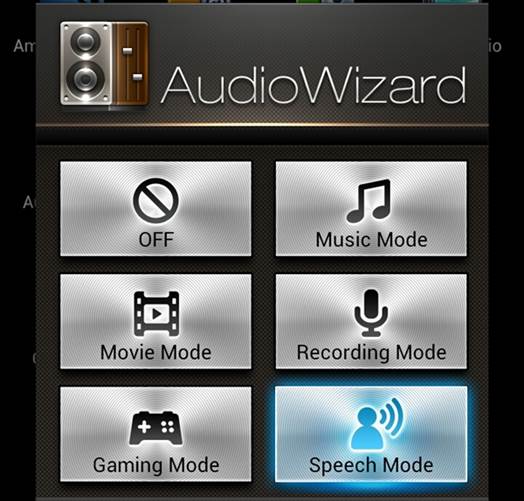Software
Quite similar to the original PadFone, its
successor provides nice Ice Cream Sandwich experience on both the phone and the
tablet; and we are sure that this sane thing will happen for the upcoming Jelly
Bean. The only customized interface that you may find here is the thumbnail overview
of 7 main home screens (pinching at anywhere on the home screen to switch) just
like the “Pad Only” tab in the app drawer, the convenient Asus Quick Settings
window in the notification tray, and “Asus customized setting” in system
settings. For those who may not know, the “Pad Only” are is just for apps that
labeled pad-only by the user – you can do this by tapping and holding an app
icon in the drawer, and then dragging it to the “Add Pad-only Tag” on the top
right corner.
The Asus Quick Settings Panel has been
really not much different since the last update on the original PadFone.
Belonging to the main notification panel, the additional panel has a screen
brightness slider lying between the outdoor mode button and the automatic
brightness button. Above them are a sliding row including shortcuts (although
it is different in order from the last time), Wi-Fi, Mobile Data, Smart Saving,
Instant Dictionary (new), Wi-Fi Hotspot, Bluetooth, GPS, Vibrate and
Auto-rotate screen. A small requirement for Asus developers: it will be very
good to help the user rearrange these toggles, as they can with Xiaomi’s MIUI
as well as LG’s UI 3.0 (on Optimus G, Optimus LTE II and others). There are 3
buttons on the next row in the panel. They will lead you to the enhanced menus
for Wi-Fi, Audio Wizard and system settings. Strangely, the tablet mode
announced that the Wi-Fi button has been replace by a dual battery indicator,
but it would not be very hard to add the Wi-Fi button into that row because of
the consistency.

The
Asus Quick Settings Panel
We still cannot get the reason why the
notification panel of the original Android cannot be as visual as Asus’s
implementation. There are more than a tap needed to switch to the second panel
for the normal settings in Google version, including screen brightness, Wi-Fi,
auto screen rotation switch and airplane mode. On the other hand, Asus just
knows what the right way is: allow users to access into any main setting
anytime just with a tap. Google can learn some lessons from this Taiwanese.
After many times of mentions, we might have
found the good opportunity to introduce the Audio Wizard: basically, it is an
audio editing application developed together with Waves, the well-known company
which is dedicated in DSP audio solutions. Just think of it like the Beats
Electronics of HTC, although it is not as famous. There are 5 presets here:
music mode, movie mode, recording mode, gaming mode and speech mode together
with a seemingly power-saving off button. While the device is working in both
phone mode and tablet mode (but disabled when the headphone is plugged in), we
are informed that it is specifically adjusted for the loud speaker of the
PadFone Station, but the enhancement is quite obvious: the sound is not only
louder but also livelier with the additional warmth. Not to mentioned, this
enhancement can only go that far, so do not expect that the PadFone Station
would be able to replace your senior speakers in the near future.

The
Audio Wizard
Like other previous Android products, the regular
bundle of apps is loaded: App Backup, App Locker, File Manager, Mirror,
MyDesktop (powered by Splashtop Remote), MyLibrary, MyNet (DLNA), Polaris
Office 4.0, SuperNote, Watch Calendar and WebStorage. It should be noticed that
the PadFone 2 owns the 3.0 version of SuperNote and supports the handwriting
recognition in many languages (that worked very well with us), the consistency
of WebStorage and PDF output. The immediate photo uploading ability is also
supported by Asus’s WebStorage, the compatibility with Microsoft Office Web
Apps (for you to edit the Office files online by using the official interface)
and the file cooperation. Those are the typical solution of Asus for Google
Drive and Microsoft SkyDrive. About the utilities, you have the similar battery
indication, task manager and PadFone Station Assistant (in order to set the
charging mode and the way coming calls are processed), with the old and new
versions of Asus’s weather utility. If you enjoy the previous weather utility,
do not be sad, because it is still available in the list.

Some
of Asus PadFone 2’s apps